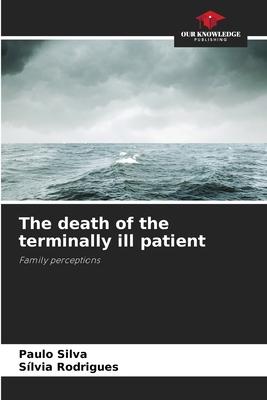This book aims to reveal various aspects of the dying process and, in particular, people’s perceptions of their terminally ill family member. In this sense, we are exploring the meaning that experiencing a terminal situation has for people who are closely following the dying process of a loved one, with the aim of using the data provided to define guidelines for the conduct of health professionals in such situations. In reality, the end of a significant person’s life entails multiple changes in the daily lives of their relatives, namely in routine activities and in the management of feelings and beliefs. Death is invariably viewed from a negative perspective. Death and suffering are meaningless. Faced with this situation, health professionals are called upon to make choices and to act as catalysts in the search for meaning in suffering. However, clinical interventions with clear objectives are required, defined together with the patient and family, but above all taking into account the patient’s interests and respect for their dignity.
| FindBook |
有 1 項符合
The death of the terminally ill patient的圖書 |
 |
The death of the terminally ill patient 作者:Silva 出版社:Our Knowledge Publishing 出版日期:2024-04-01 語言:英文 規格:平裝 / 92頁 / 22.86 x 15.24 x 0.56 cm / 普通級/ 初版 |
| 圖書館借閱 |
| 國家圖書館 | 全國圖書書目資訊網 | 國立公共資訊圖書館 | 電子書服務平台 | MetaCat 跨館整合查詢 |
| 臺北市立圖書館 | 新北市立圖書館 | 基隆市公共圖書館 | 桃園市立圖書館 | 新竹縣公共圖書館 |
| 苗栗縣立圖書館 | 臺中市立圖書館 | 彰化縣公共圖書館 | 南投縣文化局 | 雲林縣公共圖書館 |
| 嘉義縣圖書館 | 臺南市立圖書館 | 高雄市立圖書館 | 屏東縣公共圖書館 | 宜蘭縣公共圖書館 |
| 花蓮縣文化局 | 臺東縣文化處 |
|
|
圖書介紹 - 資料來源:博客來 評分:
圖書名稱:The death of the terminally ill patient
Adorno’s Gamble: Harnessing German Ideology
Adorno’s Gamble: Harnessing German Ideology
The Dialectics of Absolute Nothingness: The Legacies of German Philosophy in the Kyoto School
The Collapse of Freedom of Expression: Reconstructing the Ancient Roots of Modern Liberty
Aristotle’s Discovery of the Human: Piety and Politics in the Nicomachean Ethics
Heidegger: An Introduction
Black Divinity Institutes of the Black Theocracy Shahidi Collection Vol 1 [Remastered]
Bacteria to AI: Human Futures with Our Nonhuman Symbionts
Pink: The History of a Color
The Purpose of the Papacy
Adorno’s Gamble: Harnessing German Ideology
The Dialectics of Absolute Nothingness: The Legacies of German Philosophy in the Kyoto School
The Collapse of Freedom of Expression: Reconstructing the Ancient Roots of Modern Liberty
Aristotle’s Discovery of the Human: Piety and Politics in the Nicomachean Ethics
Heidegger: An Introduction
Black Divinity Institutes of the Black Theocracy Shahidi Collection Vol 1 [Remastered]
Bacteria to AI: Human Futures with Our Nonhuman Symbionts
Pink: The History of a Color
The Purpose of the Papacy
|









